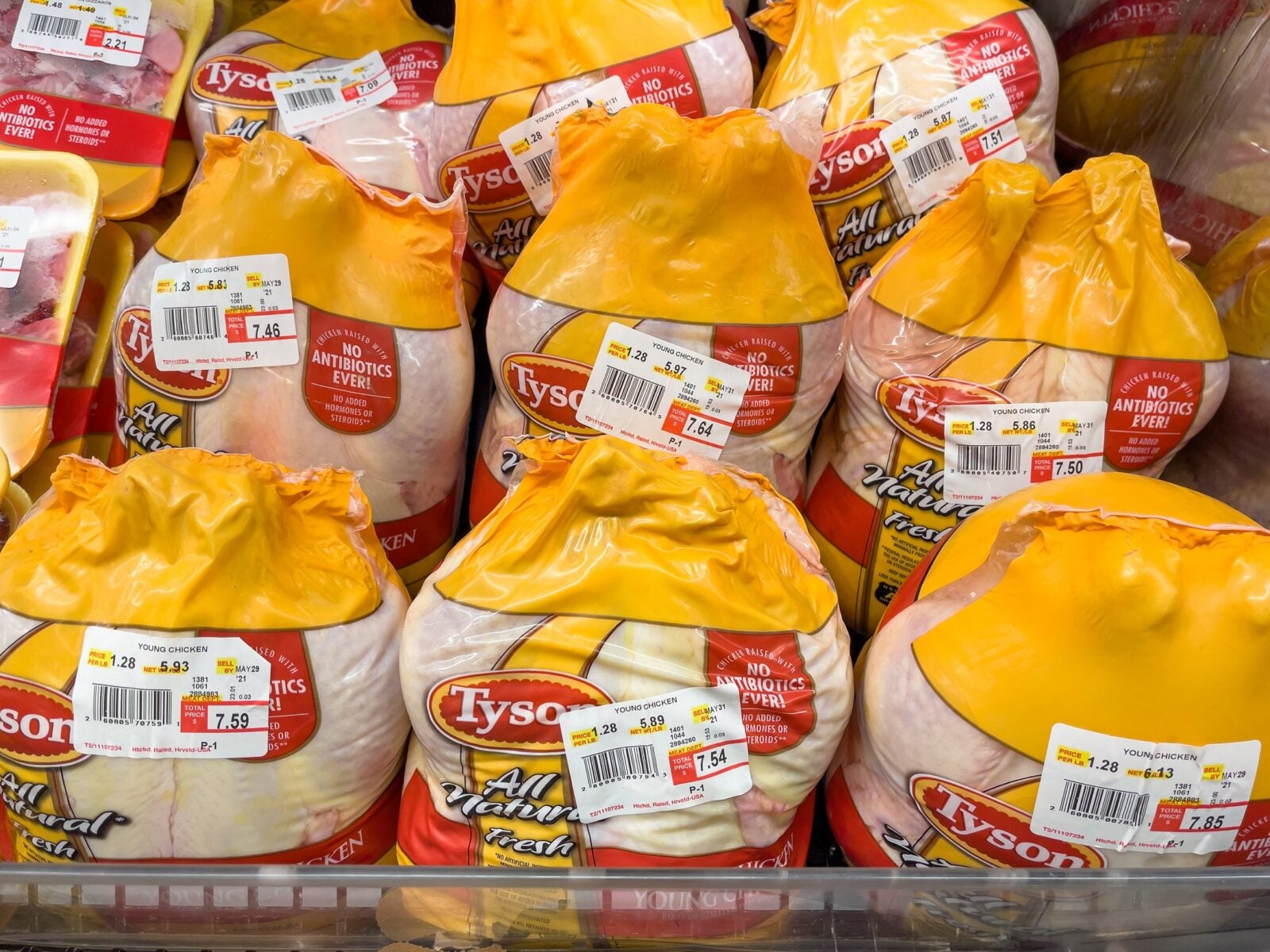
US meat giant Tyson Foods said it was “hit in the mouth” by unexpected market conditions in its fiscal Q1 but maintains it will stick to its existing strategy.
The Jimmy Dean and Hillshire Farms brands owner saw its operating income tank by 68% year-on-year in the three months to 31 December – to US$467m – as larger-than-expected beef and pork supplies weakened demand for its chicken.
Beef production was surprisingly high, leaving Tyson to resell excess chicken at a discount.
Tyson admitted it had got its forecast on demand for meat wrong.
Speaking to analysts yesterday (6 February) about the results, which covered the quarter to 31 December, CEO Donnie King described the period as a “very challenging quarter” with “market swings across all businesses [that] were unpredictable and sizable”.
He said: “This is the first time I’ve seen all markets work against us all at the same time.”
King added: “There are some places where we need to make decisions faster and, in some cases, better decisions. In some cases, we will need to adjust our business model. And in other cases, the accuracy of our projections has to be better than what we’ve demonstrated here in Q1.”
But, defending Tyson’s forecast for the quarter, he said: “We went into Q1 with a good plan but our overall results were impacted by a confluence of factors, including consumer and customer demand dynamics and the curve of the beef cycle, among other things.”
He added: “For chicken, when compared to expectations from last quarter, a few different things didn’t go as planned. Most notably, demand didn’t appear in the parts of the market where we had expected. As a result, we had to move things around and we experienced higher cost, a lower price environment and knock-on effects from a network standpoint.”
Tyson also experienced larger-than-expected supplies of chicken as the outbreak of bird flu in the US resulted in export restrictions, resulting in more poultry available domestically.
“We got hit in the mouth in Q1 because of all the protein on the market,” the Tyson chief told analysts.
Tyson planned for strong demand for chicken to fill an expected gap in overall meat supplies caused by reduced beef and pork production.
King said: “I think every chicken company in America, read the headlines around there is going to be less beef, less pork and the natural belief is that chicken will fill that gap. But the problem with all of that is there wasn’t a gap in beef and pork in Q1.
“The miss for us was clearly in our fresh chicken, our tray pack chicken at retail. That was where we stumbled. The demand for our branded retail products was very good, demand for our foodservice chicken products were all very good. The thing that has exacerbated this was the amount of overall protein in the marketplace in Q1, beef, pork and chicken.”
However, the company saw quarterly sales increase by 2.5%, year-on-year, to $13.26bn.
Chicken segment revenue increased 9.6% compared to the prior year, driven by volume growth from increased domestic production and pricing initiatives.
King said the company expects to improve its performance through the back half of fiscal 2023.
“We are optimistic about the long-term outlook for Tyson,” he said.
He added: “We have market-leading brands across diverse portfolio that resonate with consumers as proven by our year-over-year sales and volume growth. We serve an estimated one-fifth of US protein consumption and we are well positioned to meet consumer demand, which remains steady despite a challenging macroeconomic environment with ongoing elevated levels of inflation.”
King said its future strategy includes “investing in digital and automation to drive operational excellence, restoring competitiveness in our chicken segment and leveraging our financial strength to invest in the business and return cash to shareholders”.
CFO John Tyson said: “The fall in commodity chicken prices driven by heightened protein supply in the market and seasonal demand weakness does not change our strategy.”
Tyson is maintaining its sales guidance of $55bn to $57bn for the fiscal year, which implies 3% to 7% sales growth but it has cut its outlook for operating margins this year.
